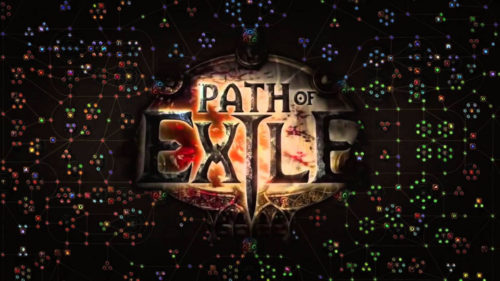In Guild Wars 2 classes are in fact called professions. There are eight different ones, each with their own unique set of abilities, mechanics, attacks, play style and roles. The profession you choose will determine which skills, traits and equipment options are available to you. Unlike in many other MMORP games professions in GW2 are not restricted to particular races or genders, so no matter what race you pick you’ll still be able to contribute in a way you prefer.
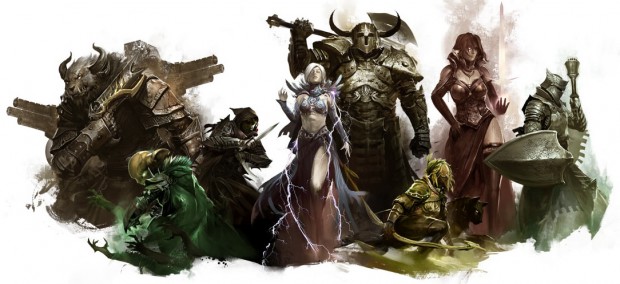
It should be noted that once you choose a class you can’t change it later on, so pick according to your personal preference and gameplay style. Try to determine whether you want to primarily dish out damage or provide support in the form of healing or crowd control. Also worth knowing is that abilities you get for crafting are referenced as “disciplines” and are separate from the profession (class) system.
GW2 professions are split into 3 main categories: Soldiers, Adventurers and Scholars. Soldiers include Guardian and Warrior and use heavy armor, Adventurers are Engineer, Ranger and Thief all of which use medium armor, and Scholars are Elementalist, Mesmer and Necromancer, who use light armor. Below is a list of 8 different professions in Guild Wars 2 along with their short descriptions so you can hopefully make the right choice.
Guardian
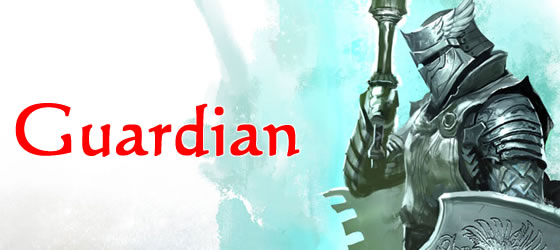
Guardians specialize in protective and defensive magic and wear heavy armor. They are able to use three virtues as their special ability, which provide a passive benefit to them:
- Virtue of Courage gives you Aegis to block against an attack
- Virtue of Justice enables your attacks to cause extra burning damage on targets
- Virtue of Resolve provides you with health regeneration
These virtues may also be activated to give a temporary beneficial effect to nearby allies as well as guardians themselves. While Guardian does have a lower health pool than Warrior profession, they compensate this with their higher health regeneration.
Attribute specific to Guardian is Willpower, which decreases the recharge of virtues and is increased by trait line Virtues. Guardians also have several different special types of skills:
- Chains – three skills that share a single skill slot, which are executed in sequence on a single target.
- Shouts – these instantly buff allies or de-buff enemies when used.
- Spirit Weapons – summon ephemeral weapons to fight alongside the guardian. Spirit weapons cannot be attacked by enemies and can be commanded to inflict a powerful attack before disappearing.
- Symbols – these ground-targeted skills inflict damage to enemies or deliver a benefit to allies. Symbols persist for a few seconds and then dissipate.
- Wards – a marked area on the ground that stops enemies from passing through while allowing allies to move freely.
The guardian has five general trait lines: Zeal, Radiance, Valor, Honor and Virtues. They are used to improve some of your abilities.
As for crafting, there are several disciplines that can create useful items: weaponsmith, huntsman, artificer, armorsmith, jeweler and chef.
Warrior
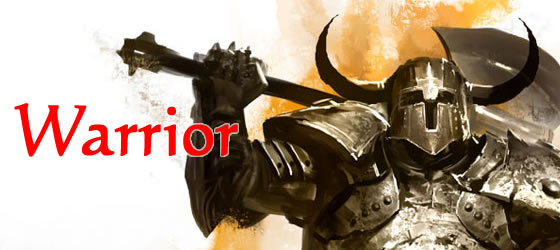
Warriors are the second Soldier profession, and they rely on their brute force, speed and heavy armor to survive in combat. They have several offensive and defensive auras for both their allies and opponents. Their unique mechanic is Adrenaline, which is built up with attacking and can be spent on powerful burst attacks. Both Adrenaline and skills that consume it have three different levels making them more and more powerful. The burst skills you have depend on which weapon set you use, and Warriors have the largest selection available to them (19 different weapon sets and 2 underwater).
Warriors have three specific skill types:
- Physical – used to control foes and for movement
- Banners – banners are placed on the ground and are used to buff your allies; they can also be moved
- Stance – you gain a specific bonus when you change stances
They also have 5 different trait lines to choose from, and they are Strength, Arms, Defense, Tactics, and Discipline. Crafting disciplines useful to Warriors include weaponsmithing, huntsman, armorsmith, jeweler and chef.
Engineer
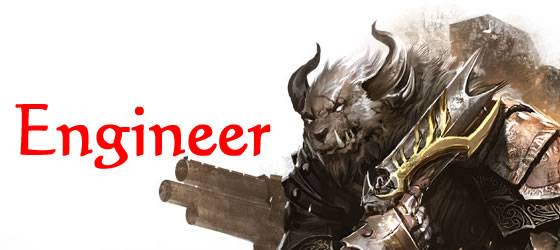
Engineers rely on their mechanical prowess to gain an edge in battle. They deploy turrets, throw elixirs and grenades, and have some other devices as well. Engineer specific mechanic is the “Tool Belt”, which appears above your skill bar and grants each of your equipped utility and healing skill an extra skill. For example if you have the Grenade Kit then the tool belt also allows Grenade Barrage, and with the med kit it adds a Bandage Self ability. Engineer’s unique attribute is Ingenuity which affects how fast your skills recharge.
Special skill types for Engineers are the following:
- Weapon kits – these are a type of utility skill that replaces the currently equipped weapon (and their skills) with a new weapon. There are three weapon kits available: the Flamethrower, the Elixir Gun, and the Tool Kit.
- Device kits — these are a type of utility skill that replaces the currently equipped weapon (and their skills) with more specialized skills. There are three different device kits in total: the Bomb Kit, the Grenade Kit, and the Med Kit.
- Turrets – deploy immobile allied devices that help defend and control an area. The amount of active turrets is limited by the amount of turret skills equipped, though only one turret of each type can be active at the same time. Turrets can be packed up and moved to different locations by interacting with it, and triggered to self-destruct by using the skill again. Each turret also grants a Tool belt skill to improve the turret’s effectiveness; For example, the Rifle Turret’s tool belt skill is Automatic Fire.
- Elixirs – these are a type of skill, which induces a random effect upon its use. These random effects are dependent upon the skill used as the skill determines the pool of possible effects. Tool belt skills are always a modified version of the corresponding elixir, that can be thrown to affect allies as well.
Available trait lines are Explosives, Firearms, Inventions, Alchemy, and Tools, and useful crafting disciplines include weaponsmith, huntsman, leatherworker, jeweler and chef.
Thief
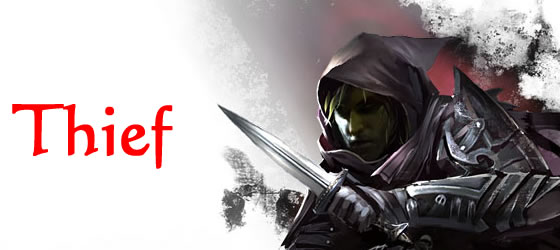
Thieves are of course skilled in stealth and surprise attacks, and are able to burst their targets and hide before they are able to fight back. Thieves can also steal environmental weapons from their enemies, making sure the fight goes in their favor, and they can also set up various traps. Their unique attribute is cunning, which decreases the recharge time of stealing.
The thief basically has no cooldown on his abilities, however the skills he uses spend Initiative: it allows you to quickly chain attacks but you can’t use them for a longer time afterwards. Thief’s special skills are the following:
- Dual wield skills – Available only to the thief profession, these weapon skills are determined by the combination of main-hand and off-hand weapons equipped.
- Shadow stepping – Certain skills allow the thief to disappear from one location and then instantly appear at a different location by traveling through the shadows.
- Stealth – Thieves have access to multiple skills which make them invisible to enemy players and ignore aggro. While in stealth the thief is not targetable, but can still be damaged by AoEs/Ground-targeted skills, and attacking will break the deception.
- Stealth skills – While in stealth, the first weapon skill of the thief’s skill bar is replaced by a special skill only usable while stealthed.
- Traps – Placed at a thief’s current location, they trigger and cause an effect whenever an enemy steps onto one.
- Venoms – apply a creature’s venom to your weapon to inflict conditions with attacks.
Their traits are Deadly Arts, Critical Strikes, Shadow Arts, Acrobatics, and Trickery. Crafting skills that benefit the Thief are huntsman, jeweler, leatherworker, weaponsmith and chef.
Ranger
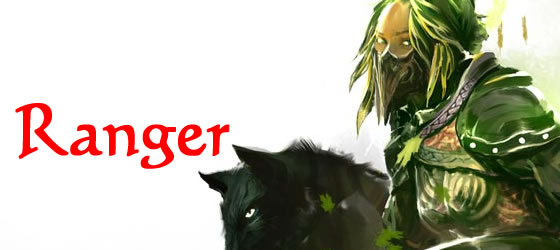
Rangers are of course skills with using a bow and are best when attacking enemies from a safe distance. They can also use pets to keep their enemies at bay. Ranger’s unique attribute Empathy increases the attributes of their pets.
Ranger’s special skill types are:
- Chains – Up to three skills that share a single skill slot, which are executed in sequence on a single target.
- Survival – Utility skills that enhance survival or offensive abilities.
- Spirits – Summon a nature spirit that influences the area around it.
- Traps – Utility skills that can be placed at a ranger’s current location. When an enemy enters a trap, it is triggered.
Their trait lines include:
- Wilderness Survival – increases Toughness and Condition damage
- Marksmanship – increases Power and Condition duration
- Skirmishing – increases Precision and critical hit damage
- Nature Magic – increases vitality and boon duration
- Beast Mastery – increases healing and pet attributes
Crafting disciplines that are useful for Rangers are weaponsmith, leatherworker, huntsman, jeweler and chef.
Elementalist

Elementalist profession harnesses the power of four basic elements: Fire, Water, Earth and Air. Depending on which weapon set they have equipped and the elemental attunement they choose the weapon skills on their action bar change, allowing for many different combinations depending on the situation. Attunement skills can be changed in combat, however weapon sets can not. Elementalists unique attribute is Intelligence, and they wear light armor.
Skill types that are available to Elementalist profession are the following:
- Arcane – spells use non-elemental magical energy which cast instantly.
- Auras – working similar to boons.
- Cantrips – involve tricks, sorcery and charms, which all cast instantly and break stun.
- Conjures – Summon useful items and potent weapons that the elementalist and other allies can use.
- Glyphs – Utility skills which enhance or modify the natural power of the elementalist. This also includes the addition of summoning elementals based on the elementalist’s current attunement.
Elementalist traits are Fire Magic, Air Magic, Earth Magic, Water Magic and Arcana. Crafting disciplines useful to them are weaponsmith, artificing, tailoring, jewellery and chef.
Mesmer
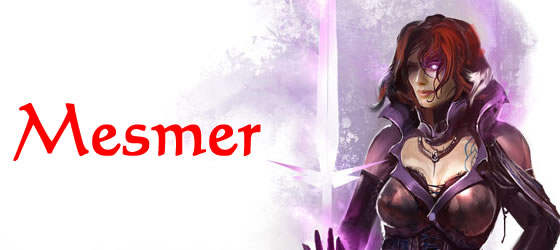
Mesmers are the masters of illusions and crowd control. Since they wear light armor they rely on their illusions and clones to confuse their opponents while they slowly wear them down. Illusions can also be shattered, enabling them to deal secondary effects such as confusion. Mesmer unique attribute is Guile, which decreases the recharge rate of your shatter skills: Mind Wrack (does damage to nearby foes), Cry of Frustration (applies confusion to nearby foes), Diversion (dazes the target), and Distortion (causes caster to evade attacks).
Special skill types for Mesmers are:
- Illusions – Physical representations of the caster. Most require a target, and are dispelled by being attacked. Up to three illusions can be maintained. There are two types of illusions:
- Clones – Have the caster’s appearance, main-hand weapon, and name. Clones are attributed with low health, low damage and will use the slot 1 skill associated with the caster’s weapon.
- Phantasms – Have the caster’s appearance with a purple glow, but take up the name of the skill (e.g. Illusionary Duelist) instead of the caster’s name. They have their own weapons that range in different appearances and behaviors. Phantasms are attributed with higher health and higher damage than clones.
- Mantras – Consist of two skills, similar to sequence skills. The first skill, which has a long cast time (around 3 seconds), is replaced by the second skill which has no cast time and can be cast during channeled spells. Multiple mantras can be prepared.
Mesmer trait lines are Domination, Dueling, Chaos, Inspiration, and Illusions. Crafting skills you might want to go for are weaponsmith, huntsman, artificer, tailor, jeweler and chef.
Necromancer
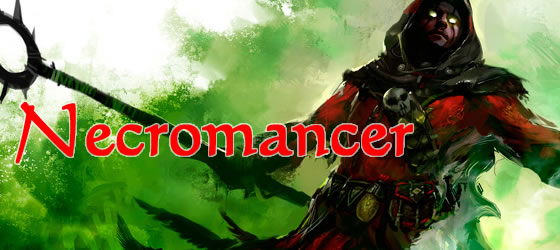
Necromancers channel blood energy, rend the souls of their enemies and summon the dead to do their bidding. They use a special resource called “life force” which is gathered every time a creature dies in their vicinity or alternatively by using particular abilities. Life Force is used to power up Death Shroud, which is Necromancer’s special form where they are immune to knockdowns and have access to new skills and traits, particularly those that buff and heal their allies.
Necromancers wear light armor, and their unique attribute is Hunger which increases their Life Force resource pool. The profession-specific skills are:
- Marks – These are ground-targeted spells that produce a variety of effects for allies and foes. A mark is placed at a location and will trigger after a foe stands on it.
- Minions – The necromancer summons undead minions to attack foes and do his bidding. Every minion-summoning spell has an associated secondary spell that appears after the minion has been summoned. This secondary spell changes the abilities of a minion, or destroys it for the necromancer’s benefit.
- Wells – Wells are persistent spells that allow a necromancer to control the area around him. Created at the necromancer’s location, wells affect targets within the skill’s range.
The five trait lines available to Necromancer profession are Spite, Curses, Death Magic, Blood Magic and Soul Reaping. Crafting disciplines useful for this profession are weaponsmithing, huntsman, artificer, tailor, jeweler and chef.
I do hope this beginners Guild Wars 2 classes guide helped you understand the basic mechanics and gameplay for each profession. If you’d like to read more detailed information about professions that include skills and abilities, trait line builds, combat tips and more I recommend the following resources:

